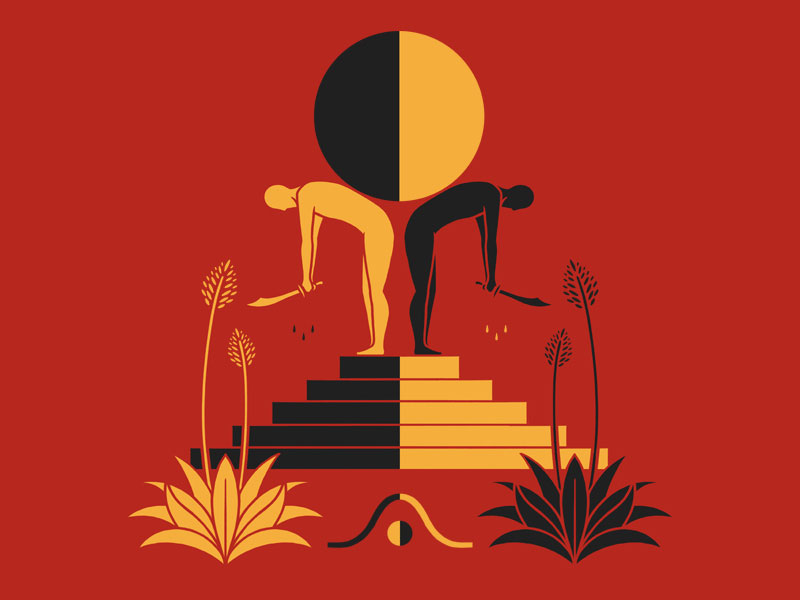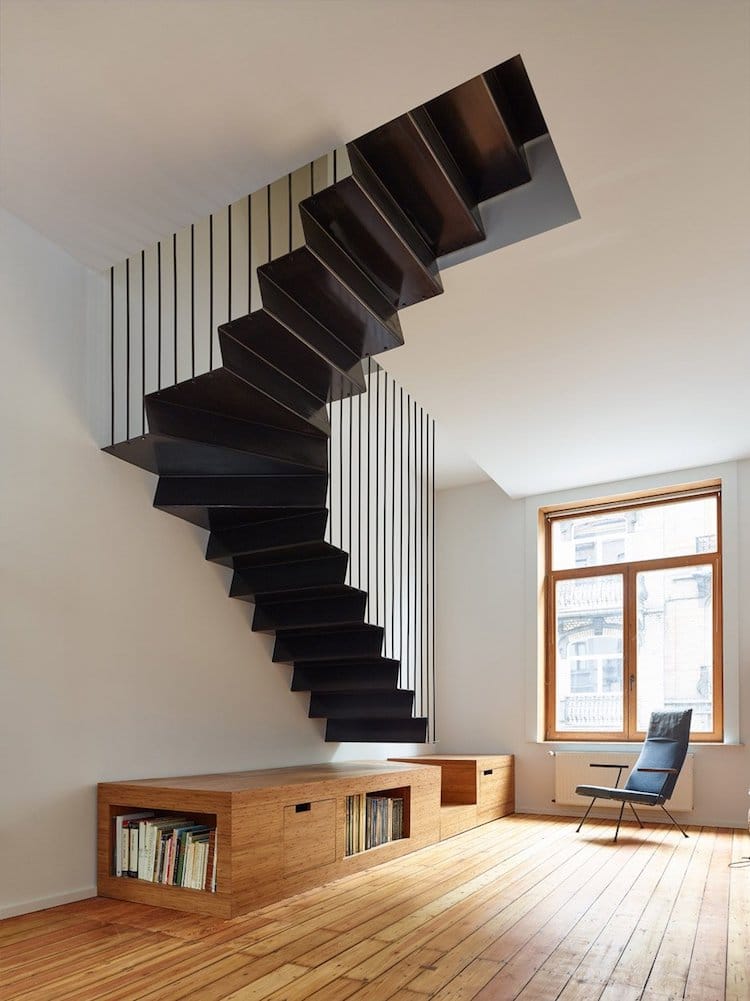Table Of Content

A mindset is a characteristic mental attitude that determines how one interprets and responds to situations. Design thinking mindsets are how individuals think, feel and express themselves during design thinking activities. It includes people’s expectations and orientations during a design project. This model balances expansive thinking with focused execution to ensure that design solutions are both creative and practical. It underscores the importance of understanding the problem thoroughly and carefully crafting the solution, making it a staple in many design and innovation processes.
New to UX Design? We’re Giving You a Free ebook!
Design Project: Five Principles For Solving Problems, CSA-Style - Association of the United States Army
Design Project: Five Principles For Solving Problems, CSA-Style.
Posted: Tue, 28 May 2019 07:00:00 GMT [source]
Once the team accumulates the information, they analyze the observations and synthesize them to define the core problems. The team may create personas to help keep efforts human-centered. Design teams use design thinking to tackle ill-defined/unknown problems (aka wicked problems). Alan Dix, Professor of Human-Computer Interaction, explains what wicked problems are in this video. Framing refers to how the primary subject of a design is placed in relation to other elements on the page. It’s most often heard referred to in cinematography or photography, with how the main focus of an image is placed within the overall image.
Learn More:
This strategy involves continuous planning throughout the year to ensure design efforts align with business objectives. When elements aren’t aligned properly, especially in relation to one another, it adds a sense of chaos to the composition. Alignment refers to how text or graphic elements are lined up on a page. This can refer to their alignment in relation to the entire composition (left, center, or right-aligned) as well as their alignment to one another. Systems thinking has applications in various fields, such as medical, environmental, political, economic, human resources, and educational systems.
What are the elements of visual design?
It can create balance, improve the standard or level of design, and reduce clutter. Designs with more white spaces are referred to as “clean” pieces of work. Some designs use guidelines to create a path users can follow to take in information sequentially, just as the content creator has planned. In a way, proportions are similar to balance, but it is measured more from the human eye than with guidelines and grids on design software. Proportions are realistic estimates and weights you apply to your content. Or is everything concentrated on one corner of the design, leaving the other end vacant with ample negative space?
Some of them contradict each other, while others complement each other. As a designer, remember that there is always an opportunity to do something brilliant and significant by breaking some odd rules here and there. Patterns also help establish your brand's presence without displaying your logo design or brand name everywhere.
Inclusivity is imperative for building successful, ethical products that scale. Not to mention, accessibility is hard and design systems are in the unique position to champion it as a fundamental standard for design, development and content strategy. Aligning the senior executive team on principles before getting into debates on operating model solutions ultimately will accelerate development of the model. Senior leaders themselves need to spend sufficient time debating, refining and then using the principles so that they take full ownership. So the team drew up, and aligned on, seven principles aimed at improving local strength and flexibility while using global scale to better advantage.
7 Essential UI Design Principles for an Effective User Interface (2023) - Shopify
7 Essential UI Design Principles for an Effective User Interface ( .
Posted: Thu, 27 Apr 2023 07:00:00 GMT [source]
In design thinking, teams may jump from one phase to another, not necessarily in a set cyclical or linear order. For example, on testing a prototype, teams may discover something new about their users and realize that they must redefine the problem. For example, teams may jump from the test stage to the define stage if the tests reveal insights that redefine the problem. Or, a prototype might spark a new idea, prompting the team to step back into the ideate stage. Tests may also create new ideas for projects or reveal insights about users.
An additive mix of colours on digital screens produces the RGB (i.e., Red, Green, Blue) colour system. If functional and aesthetic elements don’t add to the user experience, forget them. It's when every design element and principle comes together as one, creating harmonious flow and tranquility. This also brings us to the last design principle, which is unity. Even though this image has a lot of variety, it has an overall harmonious aspect, creating a sense of unity. Color, value, and texture are just a few ways to achieve this, but also principles such as contrast movement and proportion.

You could increase the text size and use colors that stand out from the background, emphasizing the CTA and making sure visitors can’t miss it. Visual balance is about ensuring your design is equally weighted on both sides of the central point. It’s like a seesaw—too much weight on either side and the whole thing becomes unbalanced. As Jared Spool, an expert on design and usability, says, “Good design, when it’s done well, becomes invisible. It’s only when it’s done poorly that we notice it.” This is why good design is tricky to define. But if you’ve ever seen an unintelligible parking sign or a website from the early days of the web, you’ll know there’s definitely such a thing as bad design.
To illustrate how design principles work, let’s have a look at an example. Here’s a design principle for Nielsen Norman Group’s website. This human-centered design process consists of five core stages Empathize, Define, Ideate, Prototype and Test. There are hundreds of ideation techniques you can use—such as Brainstorm, Brainwrite, Worst Possible Idea and SCAMPER. Brainstorm and Worst Possible Idea techniques are typically used at the start of the ideation stage to stimulate free thinking and expand the problem space.
This stage encourages divergent thinking, where teams focus on quantity and variety of ideas over immediate practicality. The goal is to explore as many possibilities as possible without constraints. This aspect is crucial in understanding the users’ needs, desires, and experiences to ensure that designs resonate on a deeper, more personal level. These stages are different modes that contribute to the entire design project rather than sequential steps.
Get tips on hiring, onboarding, and structuring a design team with insights from DesignOps leaders. Spot opportunities and challenges for increasing the impact of design systems and DesignOps in enterprises. Streamline your design process with a single source of truth from Merge. Effective project and timeline management are essential for keeping design initiatives on track, optimizing resource utilization, and ensuring timely delivery of design outputs.
If you're wondering how to apply these design principles to forms, you'll want to dive into our guide. Movement can be harnessed to distract, direct, and pull the viewer’s gaze around a design. A savvy artist can control this entire process by using subtle cues (particularly with lighting and perspective), like using lines to create directional cues and make images feel more alive. It distinguishes your company from the millions of others out there, so when folks see your designs they immediately know it’s your business.
This is where certain elements guide the viewer's eye through a planned sequence of elements. They can bridge connections to form other elements like lines but can also be used alone to create patterns and texture. The easiest way to do this is through juxtaposition and contrast. Place bright colors next to lighter hues, text next to images, and round shapes next to square ones.
We can imagine a centre point of the design and distribute the elements in a way that creates balance. Unity helps guide the viewer's attention and ensures a consistent, integrated visual experience. The absence of unity can make a design feel disjointed or chaotic. To comprehend unity and other fundamental aspects of design, consider exploring the building blocks of visual design on interaction-design.org. Pattern uses a repeated arrangement of elements to create consistency and unity throughout. Patterns can be regular or irregular, symmetrical or asymmetrical balance.
Across industries and countries, effective principles share three characteristics. Chandler’s insight that the organization must evolve to support strategy still holds true. Business historian Alfred Chandler proposed his thesis in 1962, observing that successful companies evolve their organizational structures based on their strategies. Group your principles into a tiered pyramid like in Maslow’s law of basic need, psychological needs and then self-fulfillment needs. Principle number one has the highest priority and trumps all others on the list, number two has the second highest priority, number three the third highest and so on.

No comments:
Post a Comment